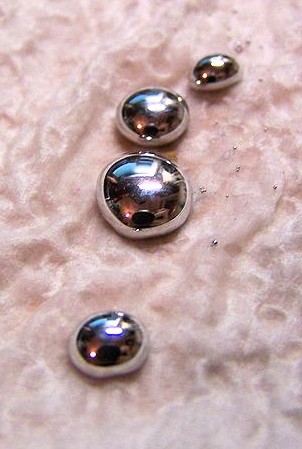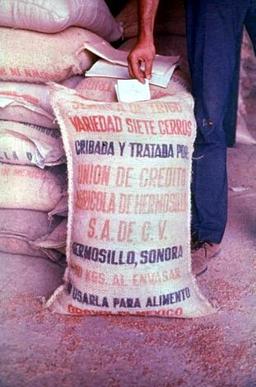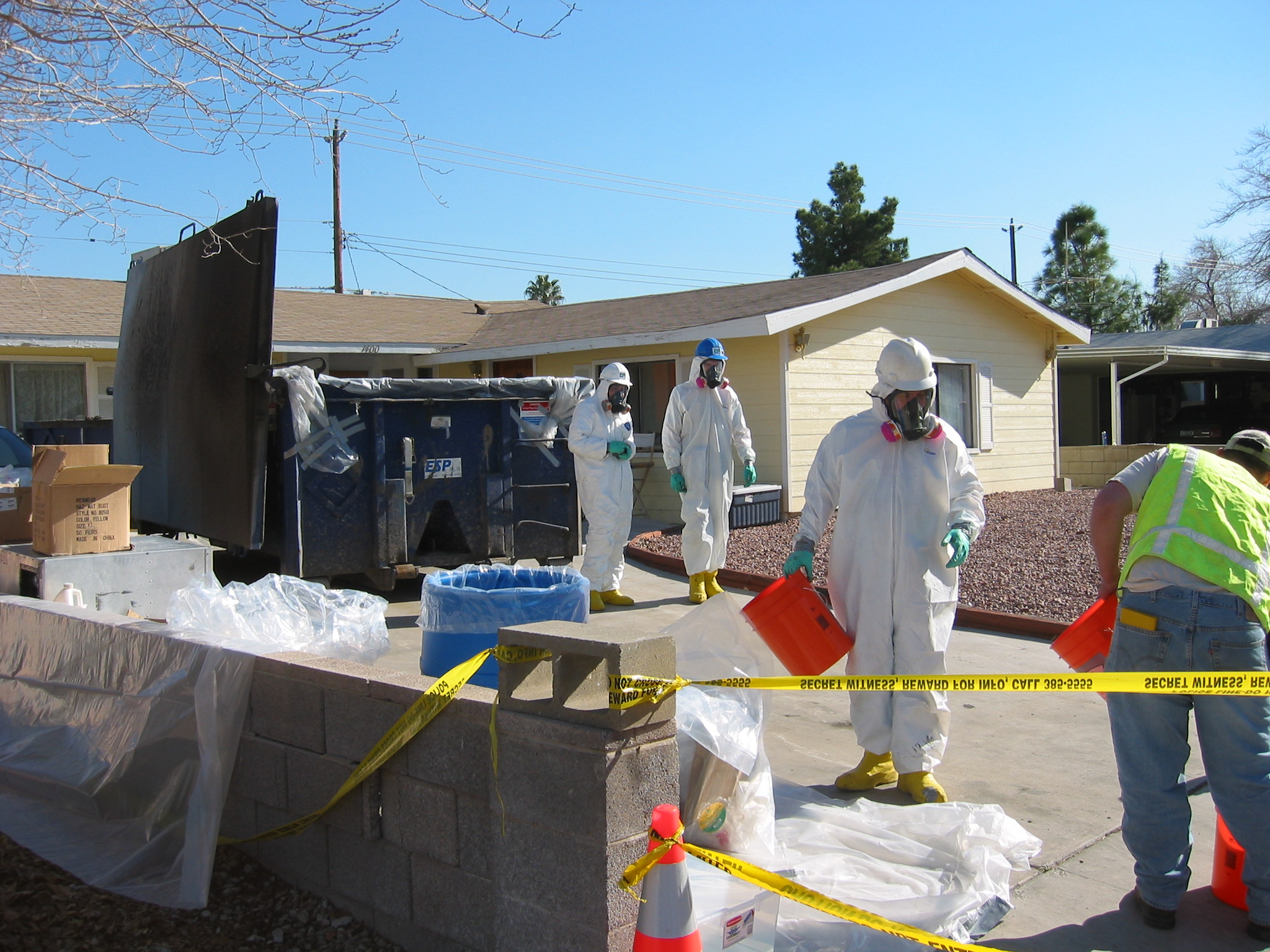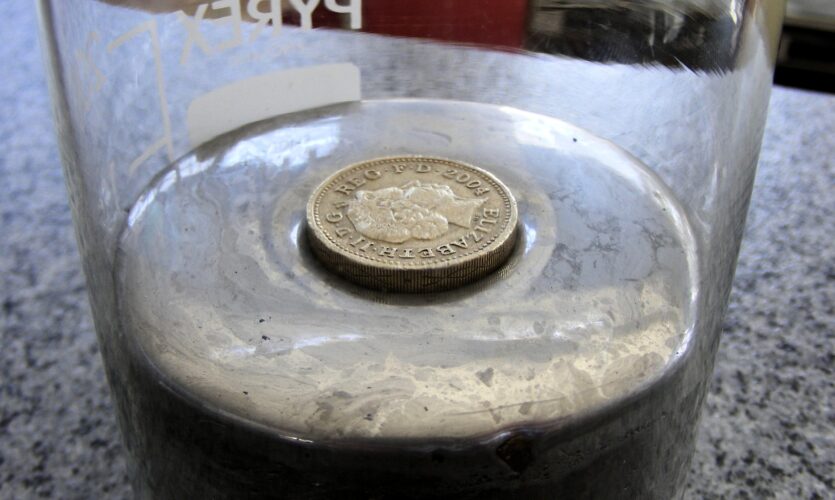
Mercury is a chemical element. It is a metal, but has peculiar physical properties. It’s one of few metals that is liquid in standard temperature and pressure (imagine normal room temperature conditions). Mercury is commonly known as quicksilver. Other than its cool sounding name (almost like a superhero, Captain Quicksilver), and interesting physical properties, mercury and most of its compounds are toxic. Mercury poisoning can be a result of vapors inhalation, or consumption.
Methylmercury as a fungicide
Methylmercury (sometimes spelled as methyl mercury) is a chemical compound of mercury. Its antimicrobial properties were discover no later than 1860s. There were attempts to use it as a cure for syphilis, but experimental treatments were followed by severe side effects in the patients. A study published in 1865 by G.N. Edwards recorded first ever confirmed fatal mercury poisoning.

Along with its antimicrobial properties, fungicidal properties were also discovered. Around 1914 it became a commercially important product used as a crop fungicide, especially to treat seed grains, potatoes, and flower bulbs to protect germinating seeds and seedlings from fungal infections. Wheat, rice, barley, oats, rye, beans, peanuts were among seeds treated with methylmercury.
Saddam Hussein imports mercury treated seeds
In 1969 Iraq suffered disastrous drought. It has reduced grain harvest, and affected 500,000 people in Iraq. Saddam Hussein, who was to become Iraq’s repressive dictator responsible for variety of purges and genocides, was country government’s no. 2 at the time. In 1970 he decided to order mercury-ordered seed grain for planting in 1971 season.
The wheat and barley seeds were imported from the United States and Mexico. Some 95,000 tonnes arrived in Basra onboard SS Trade Carrier between September 16 and November 24, 1971. Before it was distributed throughout the country, planting season was finished in some regions.

Seeds treated with fungicide were not intended for human consumption. The sacks of grain featured warnings in English and Spanish, and some also had been marked with black-and-white skull and crossbones design. Farmers receiving the grain were supposed to sign a disclaimer that they understood that grain is poisonous. Illiterate farmers (not uncommon at the time) were supposed to leave their thumbprint as a confirmation.
Farmers receive the mercury poisoned seeds
In reality, time pressure due to passing planting season, many distributors chose not to require any confirmation from the farmers. As it was soon to turn out, Iraqi farmers were not familiar with English or Spanish language. Moreover, black-and-white skull and crossbones design is known as a symbol of death, hazard, danger, toxicity or poison in Western civilization. But it meant nothing in Iraqi culture and was considered as decorative element.

Much of the unplanted grain was baked into bread and consumed (estimated to be some 73,000 tonnes). Some of it was fed to livestock. After animals were slaughtered and consumed, the accumulated mercury was consumed by humans as well. This led to a disaster. The period between exposure to methylmercury and the occurrence of symptoms in adults is quite long. It took at least 16 days from consumption to appearance of symptoms such as paresthesia (numbness of skin), ataxia (lack of coordination of muscle movements) and blindness, and ultimately death resulting from central nervous system failure.
Overwhelmed hospitals and government response
At first some hospitals were overwhelmed by number of victims. Fortunately (or unfortunately, depending on point of view), some of hospital staff were familiar with mercury poisoning symptoms, because Iraq had a minor mercury poisoning outbreak in 1960. A total of 6530 poisoning victims were admitted to hospitals, and according to official records 459 persons have died. At least 40,000 victims are estimated to have been exposed. Many may have died undiagnosed in rural areas. Some researchers estimate, that up to 100,000 people may have suffered brain damage. The 73,000 tonnes that were not used as seed were estimated to have contained sufficient dose of methylmercury to poison 3 million people.

The grain itself was also marked with a special dye. The grains had distinct and unnatural hue of pink-orange. Reports suggest that some farmers knew and understood the poisonous qualities of the grain, but the warning dye was washable. After washing the grain looked normal, but the mercury remained there. Add to this the long period before symptoms, and a disaster was unavoidable.
The government understood the extent of the disaster in January 1972, and ordered the army to trace, and dispose of any remaining grain. A new law was enacted as a deterrent. It made trading the poisonous grain punishable by death penalty.
Methylmercury banned in agriculture
Use of methylmercury was banned in Sweden in 1966, and in the UK in 1971. The United States hasn’t officially banned its use, but last mercury-based pesticides registered with Environmental Protection Agency (EPA) were voluntarily delisted by manufacturers in 1993. It is unlikely that any new pesticides or fungicides containing mercury will be allowed by EPA.
Top image: A pound coin floating in mercury (Photo by Alby / CC-BY-SA)
Fact sources:
- Mercury-contaminated grain in Iraq by Takizawa Y. / National Institute for Minamata Disease, Japan.
- An outbreak of organomercury poisoning among Iraqi farmers by K. AL-TIKRITI & A.W. AL-MUFTI
- Adverse Effects of Methylmercury: Environmental Health Research Implications by Philippe Grandjean, Hiroshi Satoh, Katsuyuki Murata and Komyo Eto
- Clinical Environmental Health and Toxic Exposures
edited by John Burke Sullivan, Gary R. Krieger - An Uneven Path Forward: The History of Methylmercury Toxicity Research by Julia R. Barrett, MS, ELS



Permalink
Stupid rural deplorables are the same the world round.